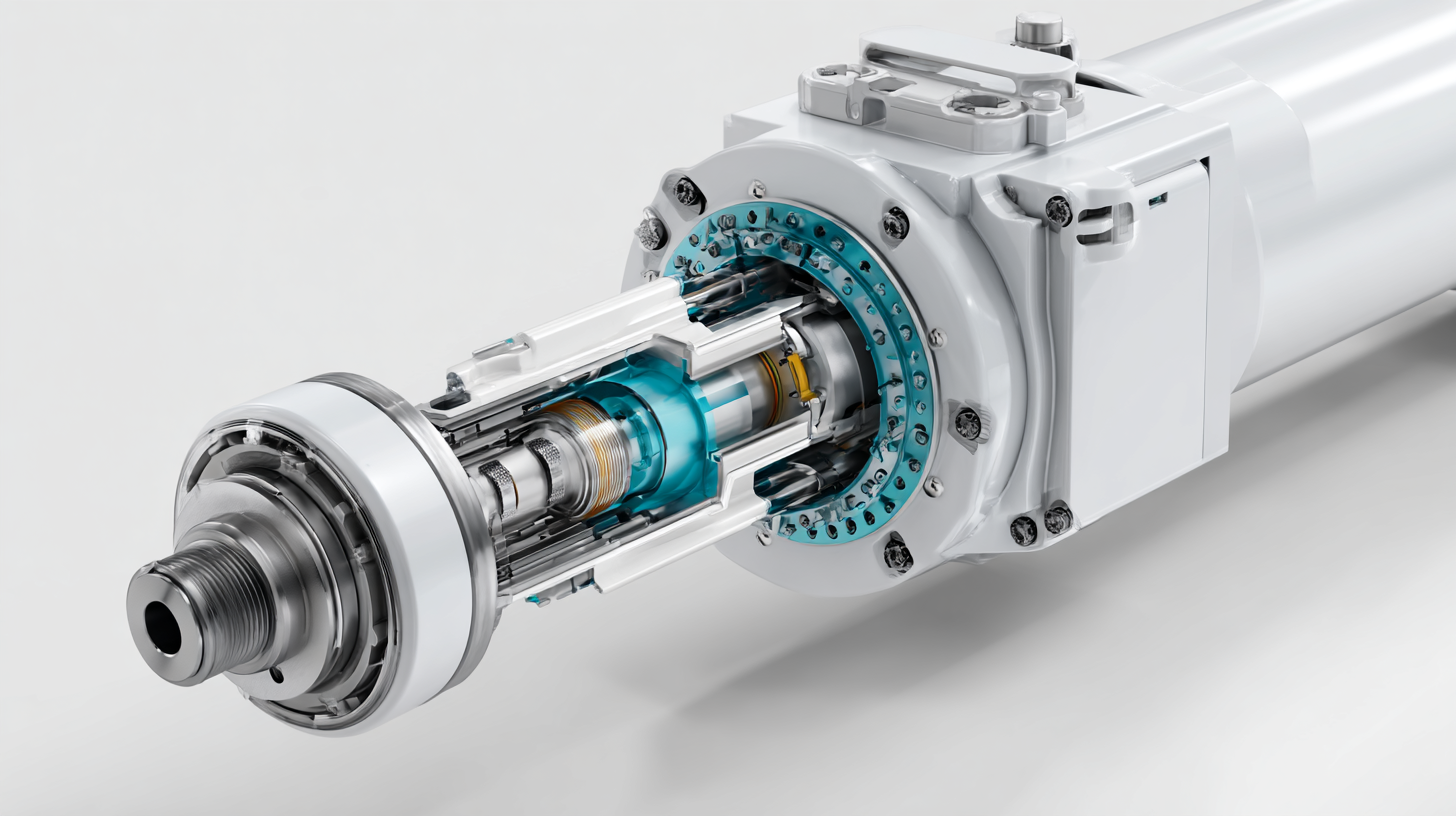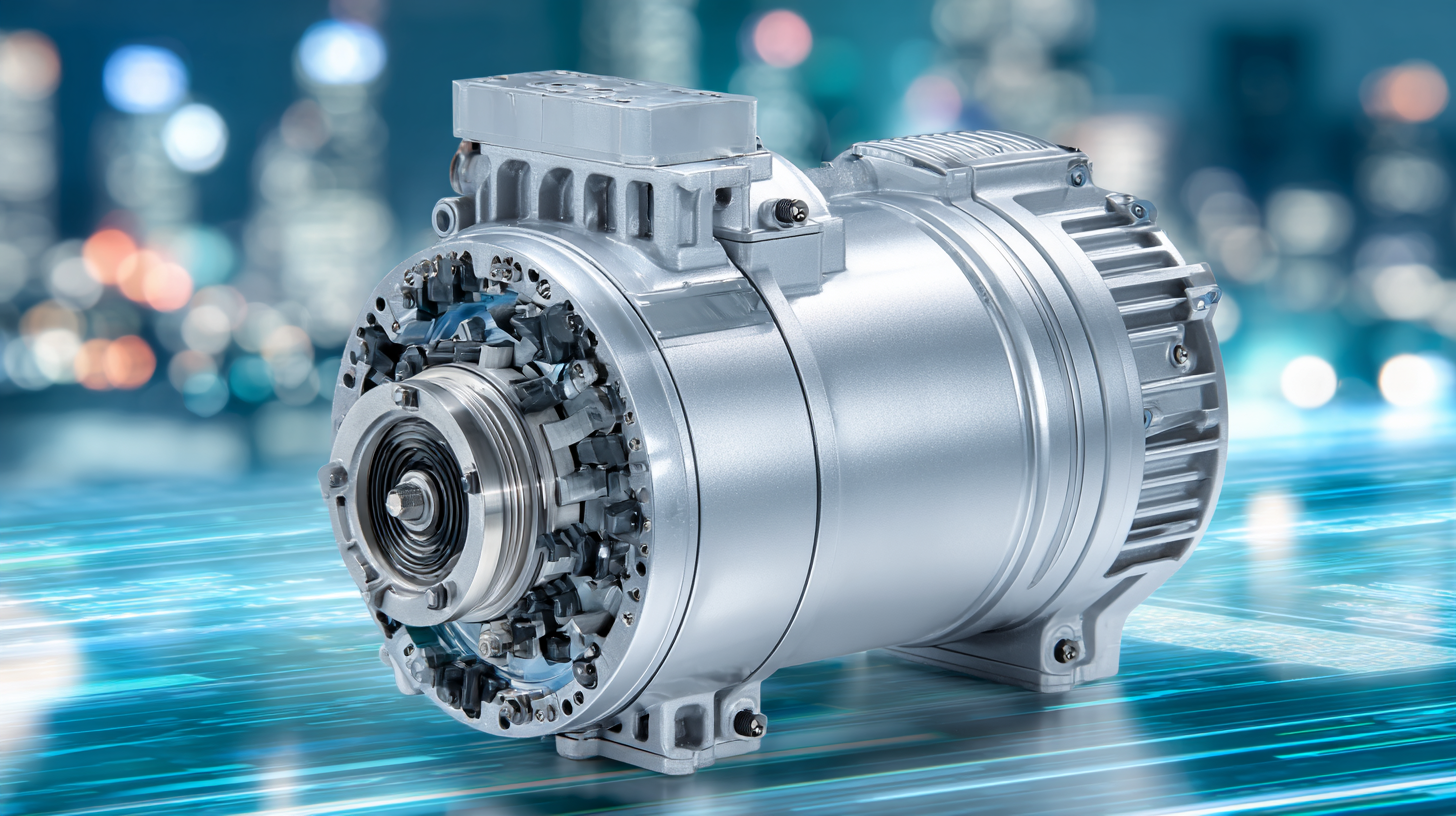As the world transitions towards sustainable energy solutions, the role of Motor Drive technology becomes increasingly pivotal in enhancing energy efficiency and reducing carbon footprints. According to a recent report by the International Energy Agency, the global motor drive market is expected to reach $22 billion by 2026, with a compound annual growth rate of 6.7% from 2021 to 2026. This growth is primarily driven by the rising demand for energy-efficient technologies across various sectors, including manufacturing, transportation, and renewable energy systems. Motor Drives are essential in controlling electric motors, leading to significant energy savings and improved performance in industrial applications. As industries pivot towards greener practices, understanding the advancements and future directions of Motor Drive technology will be crucial for stakeholders looking to innovate in sustainable energy solutions.

The integration of motor drive technologies into sustainable energy solutions is becoming increasingly essential as we move towards a greener future. The global Vehicle-to-Grid (V2G) market is projected to experience significant growth, expanding from $15.59 million in 2025 to an estimated $61.18 million by 2032, representing a robust compound annual growth rate (CAGR) of 21.6%. This surge highlights the critical role that motor drives will play in enhancing energy efficiency and facilitating the transition to renewable energy sources.

In parallel, the Insulated Gate Bipolar Transistor (IGBT) and thyristor market is expected to grow at a CAGR of 3.69%, reaching $12.5 billion by 2032. This growth is driven by the increasing demand for efficient and reliable power conversion technologies in various applications, including renewable energy systems. As the electric vehicle market matures, advancements in electric drive system architectures will further emphasize performance and control, transitioning the focus from merely extending battery life to optimizing overall vehicle dynamics. Innovations in this space will undoubtedly support the integration of renewable energy solutions and bolster sustainable transportation.
The advancement of electric motor drive technology plays a crucial role in promoting sustainable energy solutions. Key innovations in this field focus on enhancing efficiency, which directly contributes to reduced energy consumption and lower emissions. Modern electric motor drives leverage cutting-edge materials and design improvements, such as advanced semiconductor technologies and high-performance magnets, which not only improve efficiency but also enhance the overall functionality of electric vehicles and renewable energy systems.
Another significant aspect of these innovations is the integration of intelligent control systems that optimize motor performance in real-time. By employing advanced algorithms and predictive analytics, these systems can adjust operating parameters to achieve maximum energy output while minimizing waste. Furthermore, the development of modular and scalable electric drive systems allows for easier implementation across various applications, making the transition to sustainable energy sources more feasible and economically viable. As the demand for greener technologies continues to grow, these innovations in electric motor drives are set to revolutionize transportation and energy management significantly.

The integration of smart technologies into motor drive systems is pivotal for advancing sustainable energy solutions. These technologies enhance the efficiency and performance of electric motors, making them more suitable for renewable energy applications. For instance, advanced sensors and IoT-enabled devices allow for real-time monitoring and optimizations of motor performance, ensuring that they operate at peak efficiency. This not only reduces energy consumption but also prolongs the lifespan of equipment, aligning with the goals of sustainability.
Moreover, the incorporation of artificial intelligence and machine learning into motor drive systems significantly improves their adaptability. These smart systems can analyze vast amounts of data to predict maintenance needs, reducing downtime and increasing reliability. As we transition towards cleaner energy sources, such innovations are essential in maximizing the efficiency of distributed generation systems, such as wind and solar. By optimizing how electricity is utilized and stored, smart motor drive technologies contribute to a more resilient and sustainable energy ecosystem.
The advancement of motor drive technologies is pivotal in the transition towards sustainable energy solutions, especially as nations like China set ambitious renewable energy targets for 2025 and 2030. However, integrating these innovations into existing infrastructure poses substantial challenges. Businesses will need to navigate regulatory environments that are rapidly evolving alongside technological advancements. Concurrently, the necessity for robust domestic industrial policies is crucial, particularly in regions like the U.S. that are currently lagging in clean energy technologies.
Opportunities abound in the green energy sector, especially with the push towards green hydrogen production and improved control strategies in hybrid power networks. For instance, Algeria is exploring the potential of green hydrogen, which signifies a significant shift away from fossil fuels. Additionally, as green finance continues to grow, there are emerging avenues for investment in renewable energy projects. However, the challenge remains to adequately fund these initiatives while ensuring compliance with environmental governance, particularly in economically vulnerable regions like Egypt. This dynamic landscape necessitates a comprehensive understanding of both the hurdles and prospects associated with motor drive technology in harnessing sustainable energy.
| Dimension | Current Status | Challenges | Opportunities |
|---|---|---|---|
| Efficiency | High efficiency motors are widely available. | Integration into existing systems. | Innovative materials and design approaches. |
| Control Systems | Advancements in smart control systems. | Complexity and cost of implementation. | Increased automation and flexibility. |
| Sustainability | Growing focus on sustainable practices. | Regulatory compliance and standards. | Development of eco-friendly materials. |
| Market Trends | Increased demand for electric vehicles. | High competition among manufacturers. | Emerging markets and technologies. |
| Research & Development | Ongoing R&D in motor technologies. | Funding and resource allocation. | Collaborations with universities and startups. |
The implementation of motor drives in sustainable energy projects is pivotal for promoting energy efficiency, which has been identified as the "first fuel" in clean energy transitions. Research indicates that enhancing energy efficiency can yield reductions of approximately 40% in CO2 emissions by 2030. As businesses increasingly adopt sustainability as a core component of their operations, integrating advanced motor drive technologies can significantly contribute to reducing energy consumption and minimizing carbon footprints in various sectors.
In the renewable energy landscape, state governments hold a crucial role in fostering an environment that supports the deployment of motor drive technologies. By adopting best practices such as investing in grid modernization and implementing policies that incentivize energy-efficient solutions, states can accelerate the transition towards a sustainable economy. A 2026 outlook reveals that there is a pressing need for innovative solutions, as many organizations are already leveraging AI-driven technologies to enhance operational efficiency and drive growth. This strategic integration of motor drives not only meets regulatory demands but also positions companies to better respond to consumer preferences for sustainable products and services.
This chart illustrates the projected global market share of various motor drive technologies in sustainable energy solutions from 2023 to 2027, highlighting the shift towards more energy-efficient systems.
